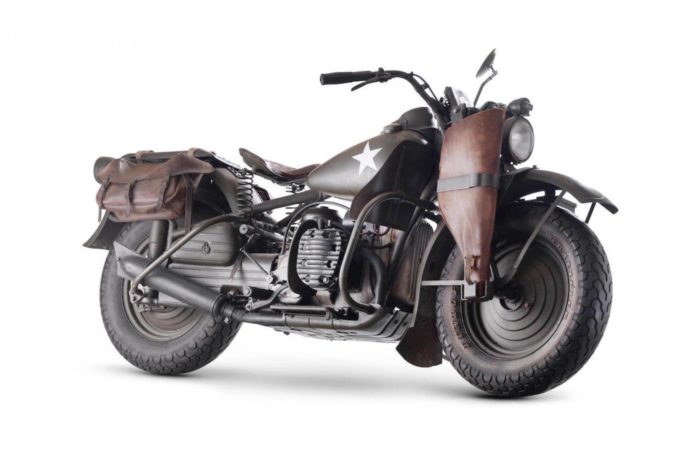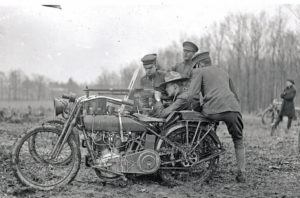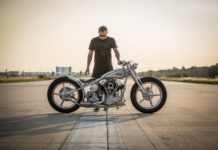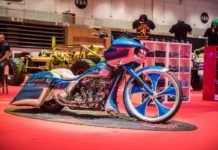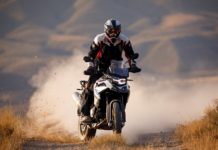The days of men charging forward on battlefields and attacking their enemies on horseback are long gone. At the turn of the century, horses were replaced by modern machinery and motorcycles played a huge part in helping soldiers advance on the battlefields.
Harley-Davidson has a long history of supporting the military, with both the products it has supplied and in the other ways it has shown appreciation over the years. The first official U.S. military order for Harley-Davidson motorcycles dates all the way back to 1916, when the U.S. Mexican Border Conflict pitted Mexican revolutionary Pancho Villa and his raiders against General John “Blackjack” Pershing and the U.S. Army. Pershing believed in using modern technology – automobiles, airplanes, telegraphy, and motorcycles – to give the Americans the advantage. The initial request for 12 bikes, later expanded to a grand total of 24, included bikes attached to a sidecar gun carriage, invented by none other than co-founder William S. Harley.
When the U.S. entered World War I, Harley-Davidson’s production ramped up aggressively to meet the demand. Approximately one-third of all bikes made over the course of 1917 and 1918 were purchased for use in the war. While the first bikes shipped were adapted civilian models, H-D quickly developed the FUS and LUS models with the trademark high, flat fenders for muddy conditions and other military-friendly features. On November 12, 1918, one day after the armistice, the very first American to set foot in Germany was riding a Harley-Davidson.
By this time, military leaders realized the motorcycle was not a pure combat vehicle, but it would soldier on as a courier and escort mount. It was also during the Great War that the Motor Company’s “Quartermaster School” – which exists today as Harley-Davidson University – began training Army mechanics.
Development of motorcycles for the military did not stop between the two World Wars. Company documents from the 1930s mention the development of a three-wheeled vehicle with an opposed twin engine under development. It’s not known if that engine ultimately became the XA of World War II years.
Only about 1,100 of the XA bikes, with opposed cylinders and a shaft drive, were built and shipped before the U.S. government cancelled the contract. But it did give rise to the experimental XS, a sidecar version featuring a driven sidecar wheel. Other experimental side projects included an engine for a “mini tank” to be built for the Canadian military, with two Knucklehead V-twin engines working in tandem. Although this project never took hold, Canadian versions of the WLA (the WLC) were delivered.
The U.S. had already shipped motorcycles to the UK and Russia as part of the Lend-Lease Act of 1941, but after Pearl Harbour, military production soared to numbers in the tens of thousands.
At war’s end, almost 70,000 WLA models, the workhorse of wartime American motorcycles, were in service. For its wartime efforts, H-D was awarded the U.S Government’s Army-Navy “E” Award for Excellence in Wartime Production for three straight years.
Motorcycle production for the military never again saw the levels of the 1940s. Military versions of the smaller Sportster model were produced in the 1960s, and saw both police and military service in nations including Vietnam and Indonesia.
Harley-Davidson’s final military motorcycles were the MT-500 and lesser-known MT-350E. The MT-350E was produced in the 1980s by Armstrong-CCM Motorcycles. When H-D acquired Armstrong’s military division, the MT-500 was already in production. It originally saw action in the Falkland Islands conflict (between Great Britain and Argentina), but later was built strictly for the militaries of Canada and Jordan.
Today, the significance of motorcycles during conflicts might not be as crucial as it used to be. However, it is still fascinating to learn about how the soldiers once took to the front line on these incredible machines.


